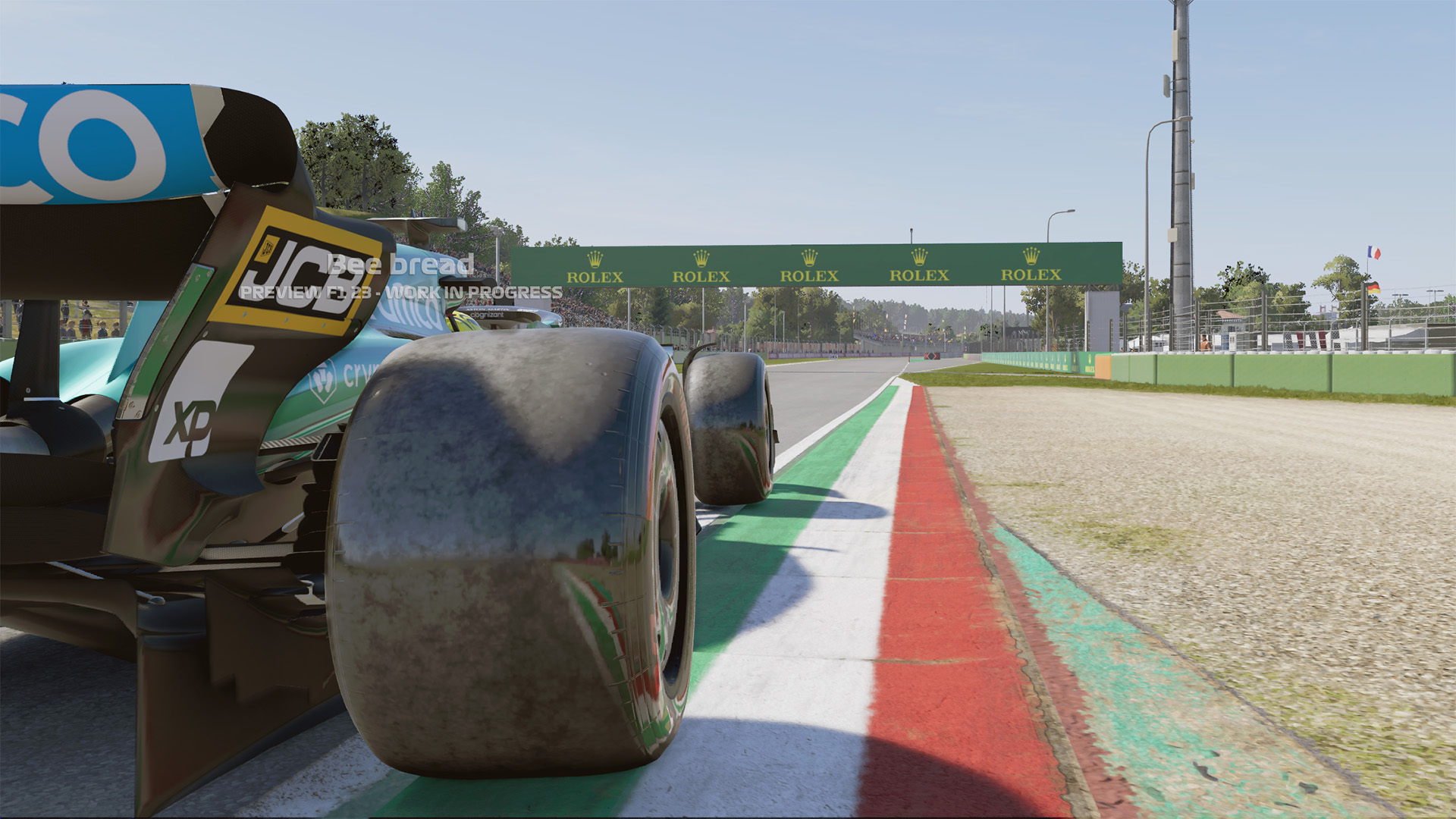
Better handling, more fun.
I’ve been lapping around Imola in F1 23 these past few days, trying to make up for the race we lost to terrible flooding in the region and to get a feel of what’s changed with the new instalment. And I have to admit, from booting the game into some new menus and jumping into a timed lap at Imola, it didn’t look like much on the surface. But after running a couple more laps, I started to realise something, “Oh, I forgot to turn traction control off.”
But I hadn’t. Traction control was completely disabled as intended. I just wasn’t spinning out nearly half as much as I usually would after coming back to the F1 games after a long break.
Whereas in F1 22 I would have to slowly ease on the accelerator pedal to ensure I didn’t lose the rear, I’m free to be way more aggressive in F1 23. I could even reliably power on the throttle while exiting a slow corner with my rear tyre on the curb, which has definitely been a death sentence for me in the past.
For the record, I’ve been playing on the Thrustmaster T818, Open Wheel Add-on, and T3PM pedals.
It feels like there’s way more grip in the game, and honestly I found it more fun to play with this improved handling. That’s because I still spun out plenty of times, but those moments I felt like I deserved to bin it. When I’m trying to lap faster and faster, and I have no assists because I’m a try-hard, sometimes I do silly things like dropping a tyre in the gravel or dropping down too many gears on corner entry. Those seem like totally fair times to send me careening off into the barriers, and so I did.
But it’s those moments when I used to spin out, when it felt like it was RNG taking the wheel for me, which were the most frustrating. And it’s those moments that have been reduced during my experience of F1 23 so far.
(Image credit: EA)
These handling changes haven’t come out of nowhere—EA’s been talking them up for a while now. We just didn’t know how big an impact these changes would have to the actual racing experience.
“F1 23’s handling and physics have had a significant upgrade on previous years, resulting in better handling, low-speed traction, and overall vehicle driveability,” EA said in a blog post earlier this month.
“Updates to physics calculations for the slip of the tyres and how this interacts with the inertia of the car have been made. Plus, the way each car’s engine delivers torque has been refined, with more progressive steps relative to gear and throttle input.”
All of these changes described sound like why the car feels significantly more stable exiting corners as I’m putting power through the tyres. If the torque is being delivered in a more gradual stepping, and the tyres are responding more realistically to the inertia of the car, in theory it’s easier to control the car out of slow corners when I’ll try to get on the power as early as possible.
(Image credit: EA)
(Image credit: Future)
Best PC racing wheels : perfect for any circuit.
Best VR headset: which set is right for trackdays?
“Adopting feedback from real F1 teams and drivers such as Anthony Davidson, players will notice a closer balance between mechanical grip from tyres and aerodynamic grip from the cars.”
I certainly noticed a difference, anyways.
The true test of the improved handling will be F1 23’s release date, June 16, when everyone gets their hands on the game. I’d like to think these changes won’t have removed the jeopardy that makes the competitive racing scene exciting, but we’ll have to wait and see.
For me, the handling changes have only been a good thing, as I’m spending less time tiptoeing around the circuit and more time nailing lap times.






